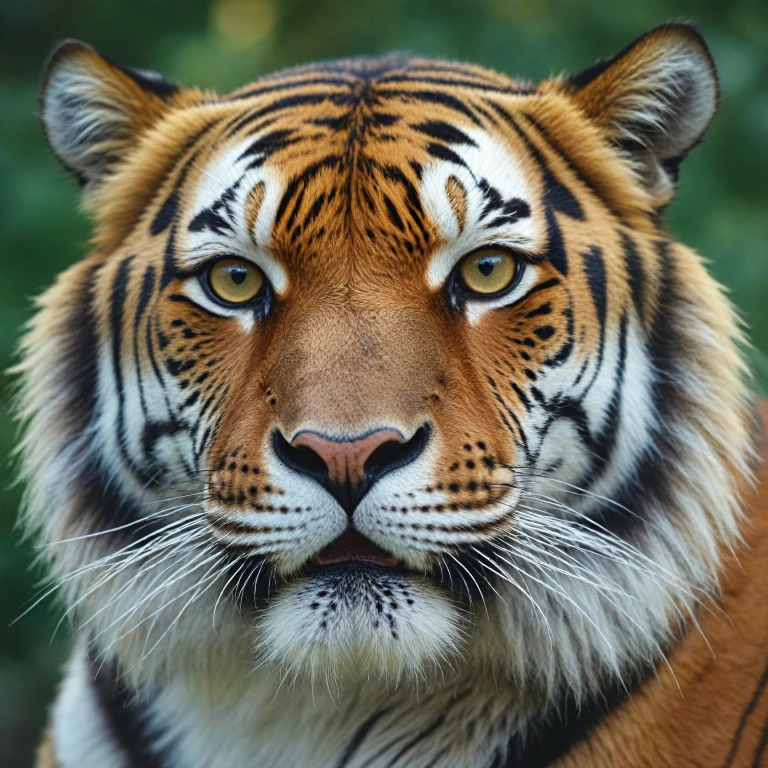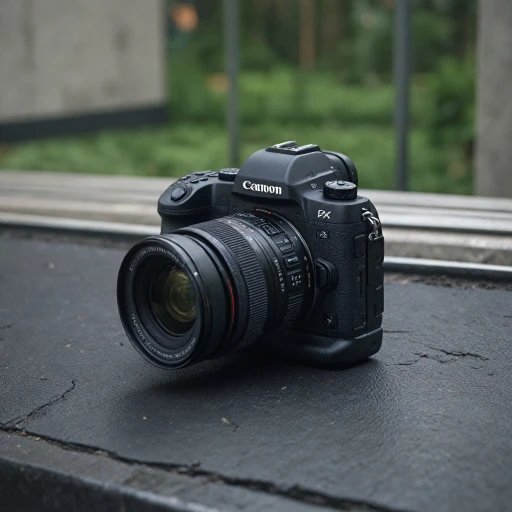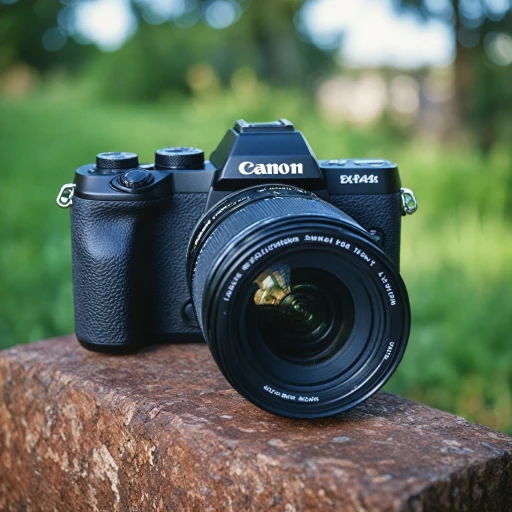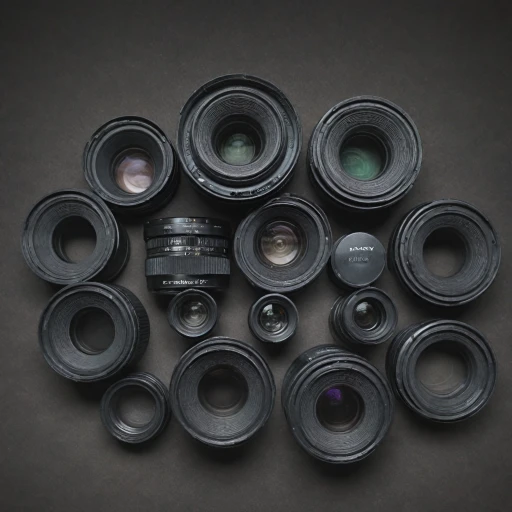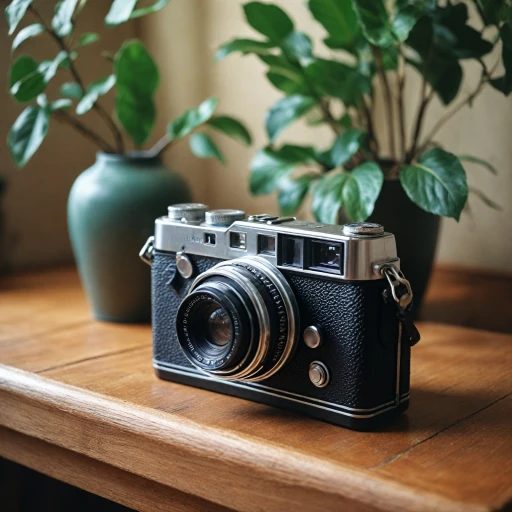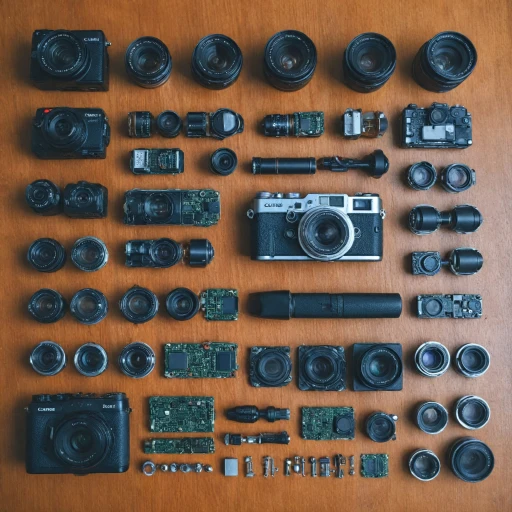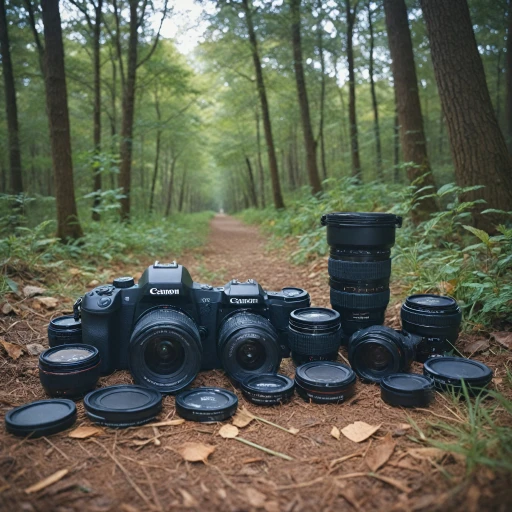
The Evolution of Digital Cameras: A Brief Overview
The Digital Camera Revolution
The digital camera industry has come a long way since its inception. What started as mere recording devices with limited functionalities have now evolved into sophisticated gadgets capable of producing professional-grade images and videos. This evolution is marked by pivotal technological innovations and continuous refinements aimed at enhancing image quality, ease of use, and versatility.
Advancements in Technology
In its nascent stages, digital cameras primarily focused on megapixels as a measure of quality, but modern advancements are driven by smarter autofocus systems, high-resolution full frame sensors, and impressive real time tracking capabilities. These enhancements have significantly improved the ability of cameras to capture fast-moving subjects, ensuring that you're always on track when shooting in dynamic conditions. For instance, the ability to switch focus automatically between subjects has brought a new level of precision to photography.
Modern Features Meeting Photographer's Needs
Today's photographers and videographers are not only concerned with still images but also how their cameras perform in capturing smoother video frames. Sony cameras often feature high fps rates, catering both photographers who are into wildlife photography and those who produce high-definition video content. The introduction of advanced focus systems, such as the animal eye detection across the frame, allows both professional and hobbyist photographers to seize perfect frame every time they click the shutter button.
Pioneering with Purpose
The emphasis on subject recognition technology marks a turning point. Cameras can now automatically distinguish between human eyes and animal eyes, making it easier to capture those fleeting moments where manual adjustments are simply too slow. This empowers photographers to set their creativity free, knowing their equipment will precisely track the subject in focus. Sony, with its commitment to innovation, continues to push boundaries with these technological marvels in their product lineup.
Understanding Animal Eye Focus: What Makes It Unique?
Decoding Animal Eye Detection in Sony Cameras
In the rapidly evolving world of digital photography, understanding the technology behind features like Animal Eye Focus is key to optimizing camera potential. Sony's innovation in this field brings a significant advancement by allowing photographers to achieve picture-perfect accuracy when capturing images of animals in motion. What sets Sony's Animal Eye Focus apart is its subject recognition capability, embedded in the artificial intelligence algorithms of their cameras. This technology employs real-time eye detection, which is particularly adept at finding and locking onto animals' eyes, even in dynamic and unpredictable situations. This feature is an extension of the human eye detection system that many modern cameras include, fine-tuned to cater to the specific patterns and movements of animals.Shifting the Focus: Tech Behind the Lens
The technology that powers this feature includes sophisticated subject tracking systems with the ability to analyze the full frame scene. Once a subject is recognized as an animal, the camera will automatically prioritize the eye detection focus area of the selected subject. This means photographers can maintain focus on the animal even when it's on the move, allowing for unparalleled clarity and detail in both photography and video. Sony cameras equipped with Animal Eye Focus include a customizable set of controls, such as the custom key for easier navigation, to switch between human and animal eye detection. The flexible interface ensures that photographers can swiftly change settings mid-shoot, be it for birds in flight or wildlife on the ground.Performance with Precision
When enabled, the technology manages to capture images at high frame rates per second (fps), with certain models even reaching speeds that facilitate flawless action shots. This real-time tracking subject ability is a game-changer for wildlife photographers, especially those interested in impromptu shots of elusive creatures that traditional focus systems might fail to capture. Embracing Sony's eye technology could elevate your wildlife photography game. To understand more about how such features align with other photography techniques, exploring additional resources like using a telescope for astrophotography with the Sony A6000 can provide insight into maximizing image quality across diverse scenarios.Sony's First Camera with Animal Eye Focus: Features and Specifications
Unveiling the Features of Sony's Pioneer in Animal Eye Focus
Sony has truly pushed the boundaries of digital photography with their innovative camera technology, reaching new heights in subject tracking. The groundbreaking camera leads with superior subject detection capabilities, particularly remarkable for wildlife enthusiasts focusing on animal eyes. When we dive into its specifications, it becomes clear why photographers hold it in such high regard. One of the standout features is the camera's advanced eye detection that zeros in specifically on animal eyes, especially during action-oriented shootings. This intelligent system can adapt in real time, ensuring that the focus area remains sharp on the desired subject. With this functionality, photographers can spend less time worrying about focus shifts and more time capturing the perfect shot, whether the subject is a bird in motion or an animal in its natural habitat. The camera boasts an impressive full frame sensor, delivering high image quality even in challenging conditions. Accompanied by high fps shooting capabilities, photographers can capture rapid sequences with seamless ease, ensuring that each frame uniquely freezes the subject in action. This is particularly advantageous when tracking subjects in dynamic environments. For videographers, the camera doesn’t fall short either. Its real-time focusing abilities translate brilliantly into video, offering uninterrupted eye focus capabilities as the subjects move within the detection frame. This technology ensures that those interested in video projects have versatile tools at their disposal. Adding customization options, the camera allows users to set animal-specific focus keys, making the transition from photographing humans to animals swift and efficient. The flexibility to switch eye focus modes is seamlessly integrated with custom key settings, allowing for a more personalized shooting experience. Sony's innovative leap, focusing on animal eye technology, has undoubtedly set a bar in the industry. As photographers explore additional features, such as the optional Canon filter conversion kit for Sony cameras, their ability to customize and enhance their photography is amplified even further. This combination of technology and versatility solidifies Sony's position at the forefront of wildlife photography.Benefits for Wildlife Photography Enthusiasts
Advantages for Nature Shutterbugs
Wildlife photography enthusiasts will find the Sony digital cameras with Animal Eye Focus remarkably practical for their craft. The unique eye detection feature focuses on the subject's eyes, such as birds or other wildlife, offering unparalleled precision. This ensures that the eye remains sharp, and thus elevates the overall image quality.- Enhanced Subject Recognition: The Sony camera can accurately recognize and track the subject in real-time, ensuring keen focus on the animal's eye rather than getting distracted by the surroundings.
- Swift Tracking and Precision: With advanced tracking capabilities, photographers can keep even quick-moving subjects like a bird in sharp focus throughout the frame.
- Improved Shooting Flexibility: Real-time eye detection gives photographers the freedom to concentrate on composition and other aspects of the frame, knowing that the camera is effectively handling focus and tracking.
Comparing Sony's Animal Eye Focus to Competitors
Checking Out the Competition: How Sony Stands Out
When it comes to digital cameras equipped with an animal eye focus feature, Sony faces stiff competition from other renowned brands. However, Sony's innovative technology and attention to detail position it as a leader in this growing niche.
Let's break down how Sony's animal eye focus technology compares to its competitors:
- Real-Time Eye Tracking: Sony's cameras, such as the Sony III series, feature advanced real-time eye tracking that allows for precise subject detection. This ensures that the focus remains locked onto the animal's eyes even when they move quickly or erratically.
- Full-Frame Sensor: Many of Sony’s cameras equipped with animal eye focus have full-frame sensors, which contribute to superior image quality. The larger the sensor, the greater the detail and range you capture in your wildlife photography, helping Sony stand out from the pack.
- Customizable Focus Options: With the capability to set animal and bird eye focus as a custom key, Sony cameras offer photographers the flexibility to quickly switch focus settings. This is particularly useful when capturing both human and animal subjects on the fly.
- High Frame Rate Shooting: With shooting speeds reaching up to 10 fps in some models, Sony provides the ability to capture multiple frames in fast-paced environments. This is essential for tracking subjects like birds in flight or animals in motion.
- Advanced Subject Recognition: Sony cameras leverage AI-driven subject recognition to differentiate between human and animal subjects, providing unparalleled focus accuracy. This sets a higher bar compared to other cameras that may struggle with mixed subjects in the frame.
While other brands offer various animal eye focus technologies, Sony's reputation for innovation and the tangible benefits of its system remain strong persuaders for many wildlife photographers. With enhancements in ease of use and precision, Sony is often the preferred choice for those serious about bird eye and overall animal photography.
Tips for Maximizing Your Photography with Animal Eye Focus
Optimizing Your Wildlife Shots with Animal Eye Focus
To fully leverage the capabilities of Sony's innovative camera featuring Animal Eye Focus, it's essential to understand and implement best practices while shooting. Here's how you can make the most of your photography adventures.- Understanding Your Subject: Before clicking the shutter button, spend some time observing the animal's behavior. Real-time eye detection is effective when you can predict how the subject might move next.
- Custom Key Settings: Configure custom keys for quick access to focus area adjustments. This allows you to swiftly switch eye focus between subjects, such as moving from one bird to another within the frame.
- Utilizing Full Frame Sensors: With Sony's full frame cameras, you achieve superior image quality. This is crucial for capturing intricate details in wildlife photography, whether it's the feathers of a bird or the fur of a mammal.
- Maximum FPS for Capturing Motion: Set your camera to higher frames per second (fps) for shooting fast-moving subjects. This helps in obtaining crisp images of animals in action, enhancing your overall wildlife collection.
- Real-Time Tracking: Engage real-time subject tracking to maintain focus on the moving subject. This feature is particularly beneficial for bird photography, where the subject might frequently change directions.
- Fine-Tuning Eye Detection: Some scenarios might require switching from human to animal eye detection. Adjust the settings depending on your shooting environment to ensure precise focus on the subject's eyes.
- Shooting in Various Lighting Conditions: Take advantage of the camera's capabilities in low-light environments to maintain image quality. Experiment with different focus areas and detection frames to find what suits the lighting conditions best.
